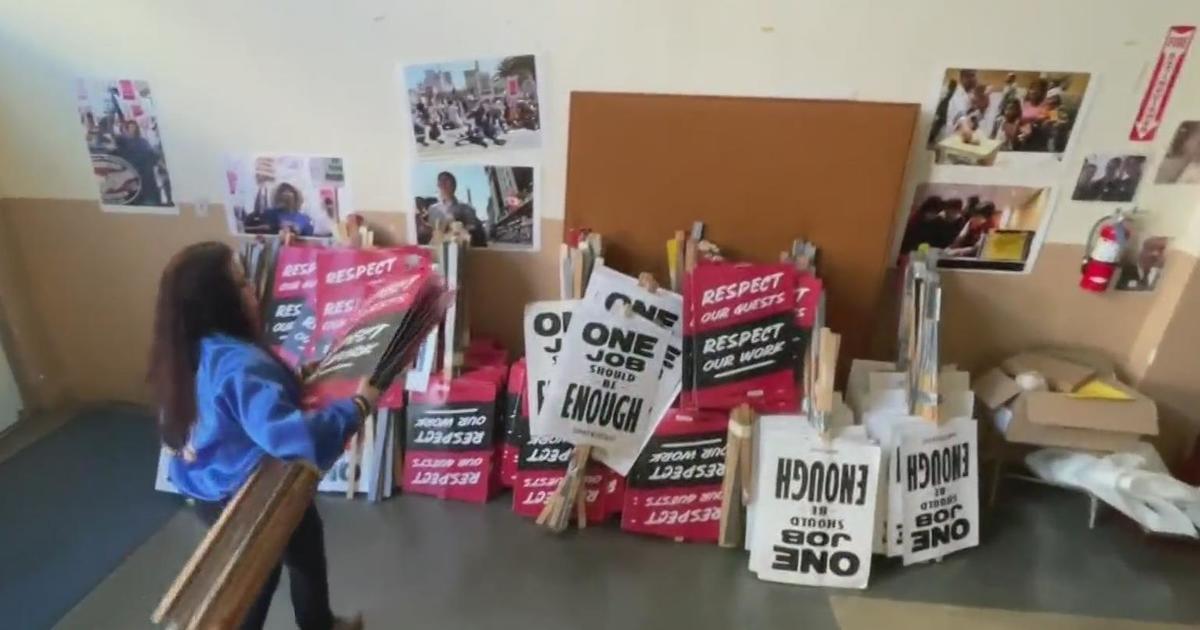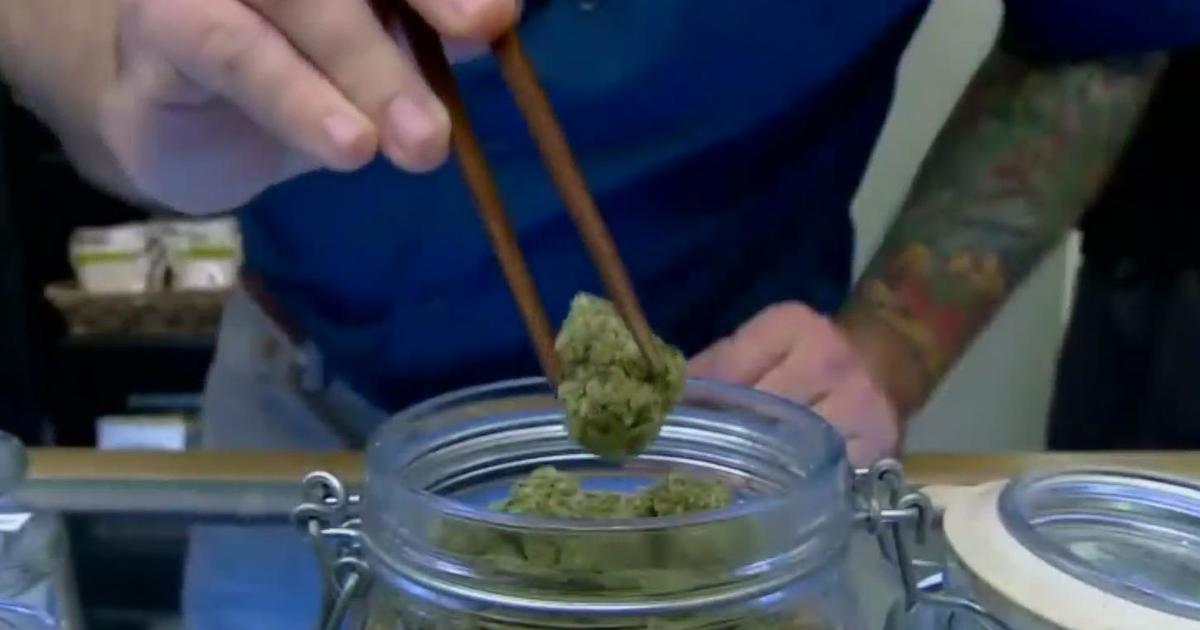Punished For Conserving, Californians See Water Rates Rise As Cities Lose Money In Drought
SAN FRANCISCO (CBS/AP) -- Saving water doesn't always mean saving money in parched California.
Millions of Californians expecting relief on their water bills for taking conservation measures instead are finding higher rates and drought surcharges.
Water departments are increasing rates and adding fees because they're losing money as their customers conserve. They say they still have to pay for fixed costs including repairing pipelines, customer service and enforcing water restrictions — and those costs aren't decreasing.
The financial blow is only expected to grow because Gov. Jerry Brown's administration has ordered communities to slash their water use anywhere between 8 and 36 percent compared to 2013 levels in response to the four-year drought. Those cuts are expected to leave agencies with a $1 billion hole in revenue, and they'll likely turn to customers to plug it, according to state estimates.
"Just because you use less water does not mean you have lower rates or a lower bill," said Lori Dolqueist, a water attorney who represents private utilities. "All of these agencies and private water companies are being told to sell less of what they do. It's a challenge financially."
While intensive conservation reduces strains on local water supplies, it can spell trouble for government budgets.
Santa Barbara, for example, expects to lose $5 million if residents hit the city's 20 percent water use reduction target. Residents are going above and beyond and reached 37 percent in May. That's good for water supply but bad for financial stability.
This month, water bills in Santa Barbara rose between $13 and $120, depending on water use, to help the city recover lost revenue and activate a desalination plant.
"Our folks are coming in and saying 'Hey, I'm doing everything right, why do I need to pay more?" said Joshua Haggmark, the city's water resources manager.
It's not clear precisely how widespread drought-related rate increases are because no government agency or association tracks them.
But agencies across California are reporting they've taken steps to tap customers to offset the losses of conservation. Residents in the San Francisco Bay Area, for example, are seeing higher bills after the region's largest water wholesaler increased the price of water 28 percent to make up for lagging sales.
Others are opting for a clearly labeled temporary drought fee, including the Sacramento suburb of Roseville which raised $1 million in the last year with a 15 percent surcharge on water use.
That surcharge, plus the relatively low price of water, left some residents disappointed by their bills after buying low-flow toilets and tearing out their lawns.
Travis Wills, 42, is still paying about $30 a month even after ditching a grassy front lawn for black mulch with sego palms, jasmine and Agapanthus flowers and collecting water from his shower and sink in buckets for plants in his backyard.
"We haven't noticed much of a difference on the bill," said Wills, who runs a home staging company. "That's troubling because they want us to reduce water."
Roseville could double its surcharge if the dry spell deepens, which Wills says he wouldn't mind too much.
"Maybe if they do that, people will stop wasting so much."
Dwindling water supplies during the drought have also driven up bills as agencies turn to more expensive resources. The East Bay Municipal Utility District, serving 1.3 million customers east of San Francisco, is charging the average household an extra $12 a month to pay for tapping water dozens of miles away near Sacramento and conservation programs.
Some water departments are able to weather a drought financially because they designed complicated rates that plan for conservation and cover fixed costs in times of drought. Even without such mechanisms, others manage to avoid rate hikes.
The Desert Water Agency serving Palm Springs was among the fiercest critics of California's mandatory conservation order. It warned regulators it would lose more than $10 million under its 36 percent reduction target.
Instead of increasing its rates, the agency has tapped reserves and cut expenses by delaying needed infrastructure upgrades and implementing a hiring freeze. But residents may end up paying more when the agency sets new rates next year.
"This is a business regardless of what some people think," general manager David Luker said. "When we strangle a business because of political correctness, there are massive consequences, and we still have to pay our bills."
Here's a look at how communities across the state are dealing with the situation:
LOS ANGELES
The city has had higher water shortage rates since 2009, although they are designed so residents meeting conservation goals still save money. The Los Angeles Department of Water and Power says its offsetting revenue losses by refinancing bonds at lower rates and watching spending, but it has the power to increase rates to recover money.
EAST BAY MUNICIPAL WATER DISTRICT
The agency serving 1.3 million customers east of San Francisco has implemented a drought surcharge of up to 25 percent of water bills on top of rate increases. The surcharge partially makes up for less revenue but is primarily for tapping a more expensive water supply.
BELLA VISTA WATER DISTRICT
The district near Redding was forced to cut water use by half after the federal government slashed its allotment of reservoir water. It avoided financial ruin because it had a rate stabilization fund, reserves specifically set aside for a sudden drop in revenue.
SANTA BARBARA
The coastal community made headlines for hiking rates to activate a dormant desalination plant, but the increase also helps offset the costs of the city's 20 percent conservation mandate. Residents are on track to exceed that goal and potentially drain millions more from the water department's budget.
SAN FRANCISCO
Residents in the water-frugal city aren't paying more for conservation because the city is tapping reserves and cutting costs. But some surrounding communities that buy water from the city are looking at increasing rates after the San Francisco Public Utilities Commission increased the wholesale price of water by nearly a third.
DUBLIN-SAN RAMON SERVICE DISTRICT
The agency east of San Francisco lost access to government reservoir water, but its tiered water rates increase during drought emergencies in a way designed to keep money coming in at steady levels. The district recently reduced water rates because it collected more revenue than it needed.
ROSEVILLE
The Sacramento suburb has tacked on a 15-percent surcharge for the metered portion of residential water bills last summer, which it says averages to a few dollars a month per house. The city's water department has also tapped reserves and may increase its surcharge.
DESERT WATER AGENCY
The district serving oasis resort communities, including Palm Springs, says it faces a $10 million shortfall because of conservation but can avoid rate hikes for now. It tapped its reserves, implemented a hiring freeze and delaying needed infrastructure upgrades, but it may shift costs onto residents when it revisits rates early next year.
© Copyright 2015 The Associated Press. All Rights Reserved. This material may not be published, broadcast, rewritten or redistributed



